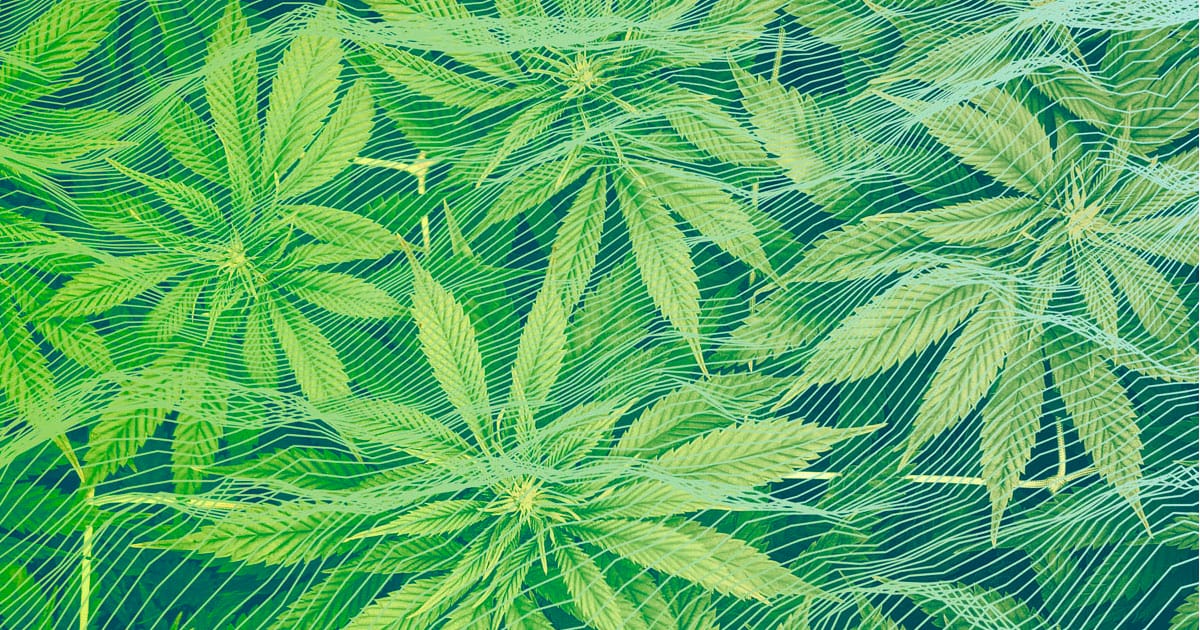Dehumidifier Performance Curves: The conditions that matter most for your grow
Key Takeaways
- Dehumidifier performance curves are data tables that indicate how a dehumidifier will perform at various temperatures and relative humidity levels.
- The table in this article is a simple “curve” that shows how our dehumidifiers perform under three conditions most relevant to many growers.
- This data is critical for growers to understand how much water a dehumidifier can remove from a grow room under specific conditions. This is vital for properly determining how much dehumidification you need in a room.
- Most manufacturers promote how their dehumidifiers perform at 80 F /60% relative humidity (RH). While it’s an important baseline, it’s not the most important number. Focus instead on typical lights-off conditions.
- Your dehumidifiers will work hardest when lights are off, so size your dehumidification needs based on those conditions. A performance curve will help you understand how much water a dehumidifier can remove in that environment.
Water in, water out.
It’s a simple – and often effective – way to determine how much dehumidification you need in your grow room.
But as cannabis cultivation and our understanding of plant transpiration rates becomes more sophisticated, a performance curve is a much handier – and reliable – way to size your humidity control setup.
The reason: Neither the water plants release nor the capacity of a dehumidifier can be assumed as constant throughout an entire day. Much like understanding the changes in a plant’s transpiration rate, a dehumidifier performance curve
helps you quickly see how a dehumidifier operates under various conditions. The “curve” comes from plotting data that shows peak performance vs. the points where it falls off.
So, with a performance curve, you can get into specifics. Need to know how much water a dehumidifier can remove at 75 F when plants are sleeping? No worries. What about at 65 F in a dry room? Easy.
Working with Dan Dettmers, our application engineer and global HVAC and dehumidification expert, we’re going to break down why performance curves matter, what key metrics to look for, and when to measure how much dehumidification you need.
But, as cannabis cultivation becomes more sophisticated, a performance curve is a much handier – and reliable – way to size your humidity control setup.
The metrics that matter
The reason we often refer to “water in, water out” is because it tells us important information without adding a ton of complexity.
For example, if you apply 300 pints of water daily, you can expect plants to put roughly the same amount back into the room’s air that day through transpiration. Of course, that’s an oversimplification, but it’s a good place to start.
Here’s where performance curves come into the picture. When you know specific conditions, you can more accurately determine your needs, from capacity to number of dehumidifiers per room.
Without performance curves, you’re left to work off limited data manufacturers are required to share publicly. Generally, they’ll promote how their dehumidifiers perform at 80 F/60% RH. That’s the traditional testing condition required to get American Home and Appliance Manufacturers (AHAM) certification.
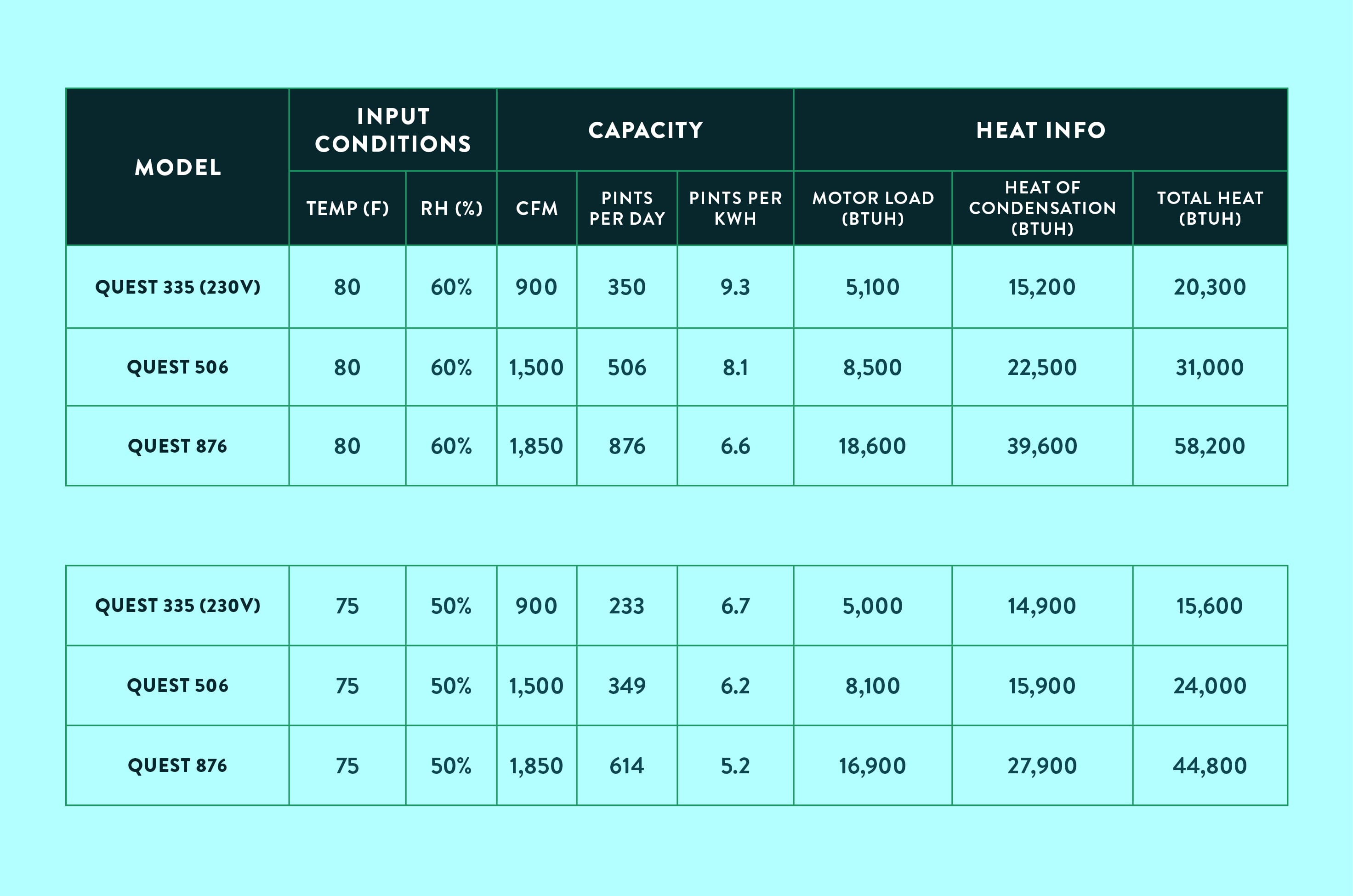

Here’s the problem: 80 F/60% RH isn’t always relevant for growers who need to know how machines will perform under various conditions, specifically in their flowering and drying rooms. If you rely only on 80F/60% RH there’s a chance you don’t size properly and put your plants at risk for things like powdery mildew.
“What’s important to note is the capacity and efficiency of each machine at those conditions,” said Dettmers, who has more than 25 years of experience helping professionals solve complex commercial dehumidification needs. “For instance, Quest units at 75 F/50% RH are better than most dehumidifiers at 80 F/60% RH. That’s significant for growers because temps and RH drop at night – and that’s what really matters.”
Caption: This table gives you a valuable breakdown for three of our most popular units under conditions most relevant to cannabis cultivators. Complete performance curves for all our units are available.
The nighttime is the right time
Determining your grow room’s dehumidification needs during lights-on conditions is like consciously choosing to wear jorts. It’s generally a bad idea.
For starters, when lights are on the room is hotter, with standard lights giving off a significant amount of heat. Because the room heats up, your air conditioner is working hard during this time. Of course, LED lights produce less heat, but given their relatively slow adoption we’ll save that topic for later.
When your AC is humming along during the day, you don’t need as much supplemental dehumidification. The AC dries the room out, taking pressure off stand-alone dehumidifiers.
Your dehumidifiers will still work during the day to pick up the slack, given plants transpire roughly 70% of their water when lights are on. More dehumidifier capacity is required during times of heavy transpiration (such as late in flower) or when there is reduced need for A/C (LED lighting).
However, at night the A/C turns off and the heat disappears. Therefore dehumidifiers are responsible at that time for removing the bulk of the humidity. That means, you need to know how a dehumidifier will perform under lights-off conditions. And that’s why we value performance curves so much.
When it gets dark, temperatures and relative humidity drop. So, at that point who cares what a dehumidifier is capable of doing at 80 F /60% RH? More likely, you need to know how it works at 75 F /50% RH. That’s because when lights are off your AC runs far less, but plants continue to transpire. If that moisture isn’t managed, you’ll see tremendous variation in your RH, which can negatively affect plant health and yields.
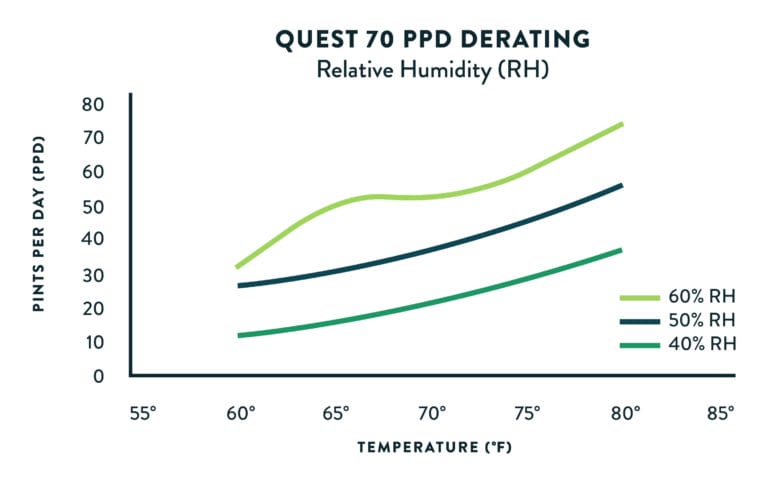

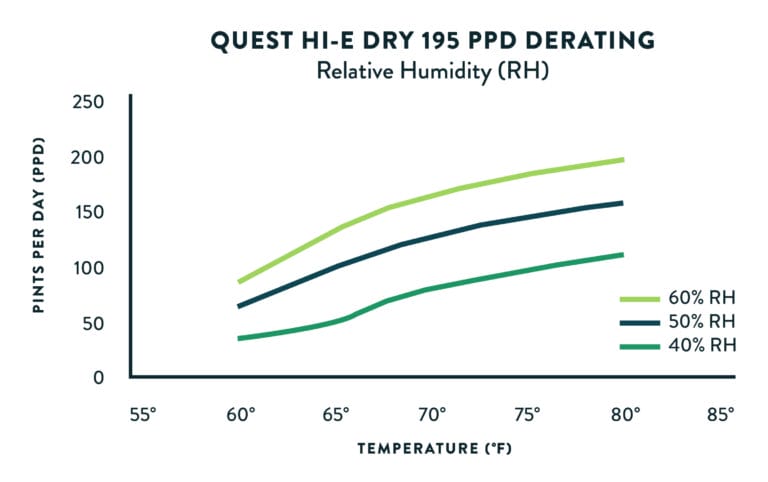

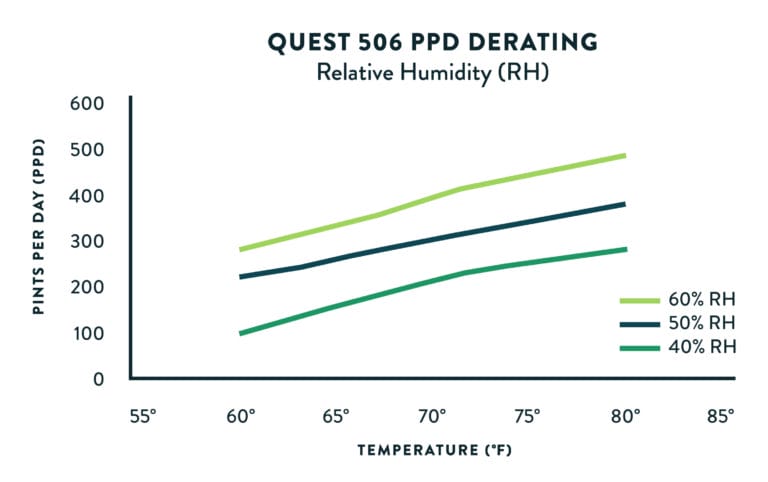

Under those varied conditions, the most important thing to know is how many pints per day (ppd) of water the dehumidifier pulls from the air and how efficient (pints/kWh) it is.
“If you know those two things you ensure you’re pulling the proper amount of water from the air and using machines that won’t cost you a fortune in electricity,” Dettmers said. “A performance curve is the easiest way to see that information.”
Certainly, a lot of factors go into your grow room’s setup. But when it comes to dehumidification, a performance curve can help you make strategic decisions.
Performance curves: A factor in room setup
Certainly, a lot of factors go into your grow room’s setup. But when it comes to dehumidification, a performance curve can help you make strategic decisions.
For instance, staging dehumidifiers becomes a factor depending on how much water you need to remove under specific conditions. Let’s say you need to remove over 600 pints per day in a single grow room. Simple logic would say to use the largest Quest unit. But, that’s not necessarily the right answer and here’s why:
For starters using a single dehumidifier is sort of like using a sledgehammer to hang a picture, it is too large to give you finesse in your control of the humidity. At 75 F / 50% RH (lights-off conditions) a Quest 876 unit removes 614 ppd (still far above any other similar unit on the market) based on our performance curve.
With that in mind, remember the amount of water you need to remove is not always going to be over 600 ppd, especially early in plants’ lives. That means the dehumidifier will cycle as it quickly pulls moisture out of the air, turns off and waits for the humidity to rise up again. Through this process, the relative humidity will also swing above and below your setpoint which can be detrimental to plant health.
The better idea is to go back to the performance curves and install three smaller Quest 335s at 233 ppd per unit. At full load, you will have the needed capacity but you will easily be able to back off when you don’t need a sledgehammer to remove the moisture.
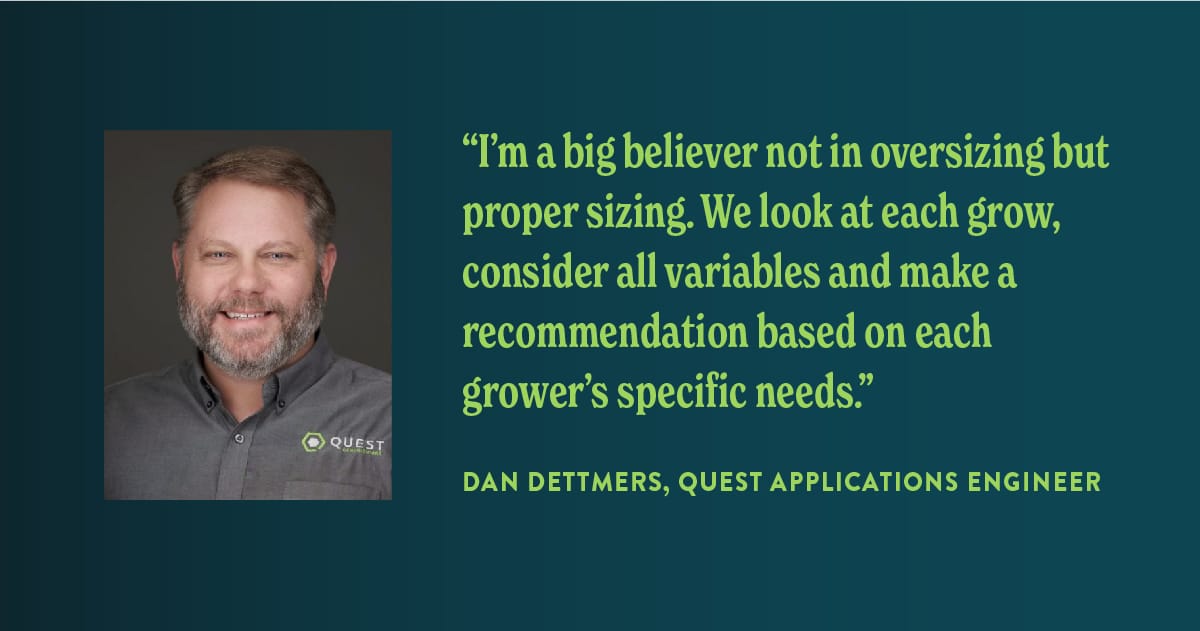

“I’m a big believer not in oversizing but proper sizing,” Dettmers said. “We look at each grow, consider all variables and make a recommendation based on each grower’s specific needs. With that said, we often start with looking at temperature, relative humidity, the amount of water applied daily and varying transpiration rates so we can cross-reference with our performance curves to find the best fit..”
Need more detail? Are you an engineer who wants to get into the weeds? Send us a note any time.
Published on May 27 2022
Last Updated on Mar 04 2025
Categories: Dehumidification, Grow Room Setup, Growing Cannabis

